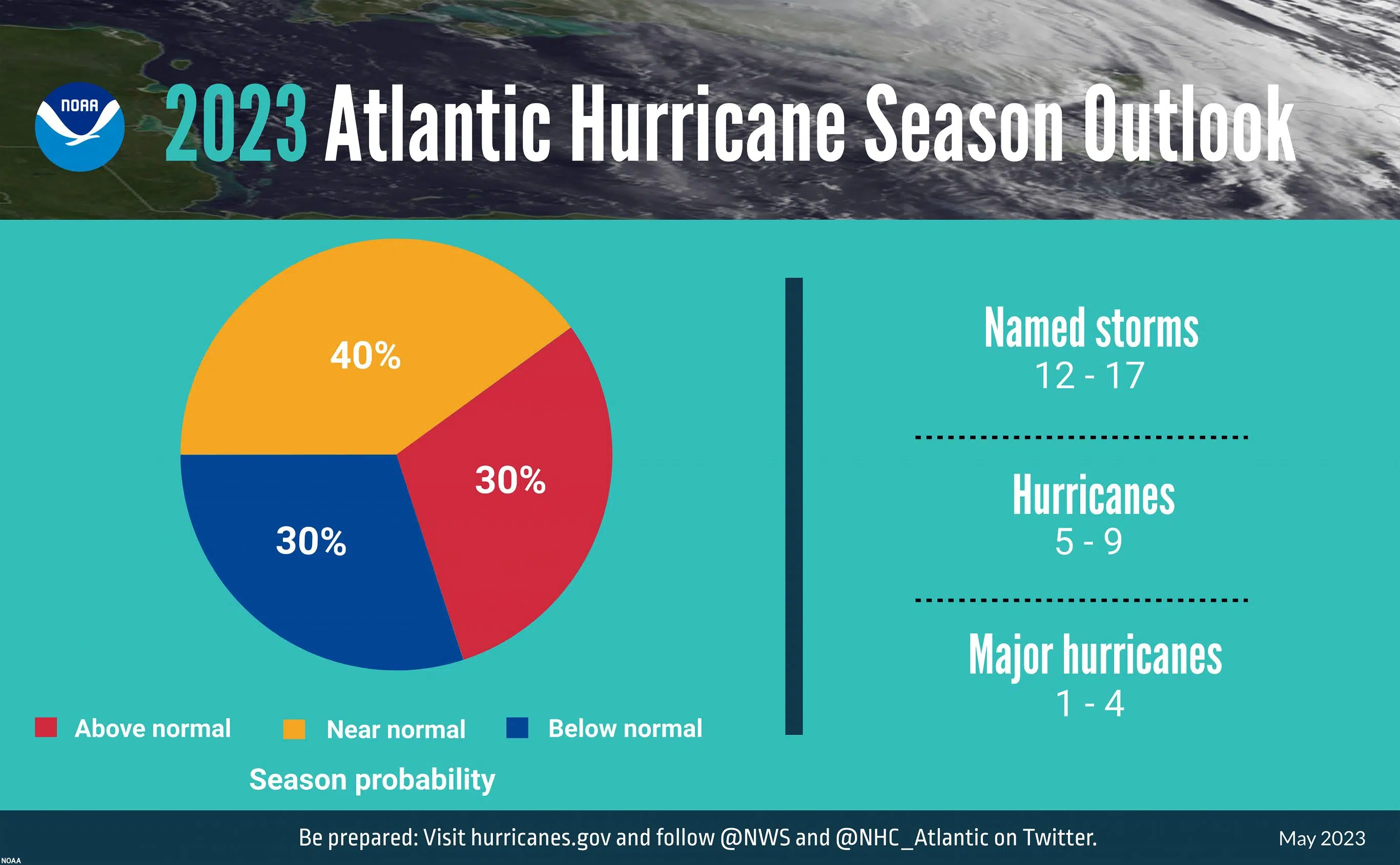The Canadian Hurricane Centre says we should expect near-normal activity in the Atlantic this year.
But forecasters say two competing factors will determine just how many storms we actually end up seeing.
The U.S. National Oceanic and Atmospheric Administration (NOAA) released its annual forecast on Thursday.
It predicts a 40 per cent chance of a near-normal season, a 30 per cent chance of an above-normal season, and a 30 per cent chance of a below-normal season.
NOAA is forecasting between 12 and 17 named storms (average of 14) this season. Five to nine of those (average of seven) could become hurricanes, including one to four (average of three) major hurricanes.
Bob Robichaud, a meteorologist with the Canadian Hurricane Centre, said they are seeing high potential for El Nino to develop this summer.
“When we have an El Nino, we tend to have fewer tropical cyclones in the Atlantic,” Robichaud said during a briefing on Thursday.
“El Nino increases the wind speeds in the higher levels of the atmosphere, resulting in significant wind shear downstream from that — in this case, over the Atlantic Ocean.”
But Robichaud also noted that sea surface temperatures in the Atlantic are “extremely warm” at this point.
Higher temperatures in the tropical Atlantic Ocean and Caribbean Sea can create more energy to fuel storm development.
“Which factor actually ends up being the dominant one remains to be seen,” said Robichaud.
Between 35 and 40 per cent of Atlantic storms end up in the Canadian Hurricane Centre’s response zone, he said, but not all will have an impact on land.
Last year, there were 14 named storms in the Atlantic. Eight of those storms became hurricanes and two were classified as major hurricanes.
The World Meteorological Organization retired Fiona and Ian from the list of names because of the death and destruction they caused.
Robichaud said it is important to stay informed throughout the hurricane season, particularly when a storm could threaten land.
The hurricane season officially runs from June 1 to November 30, with the bulk of the tropical cyclone activity usually occurring from August through October.






Comments